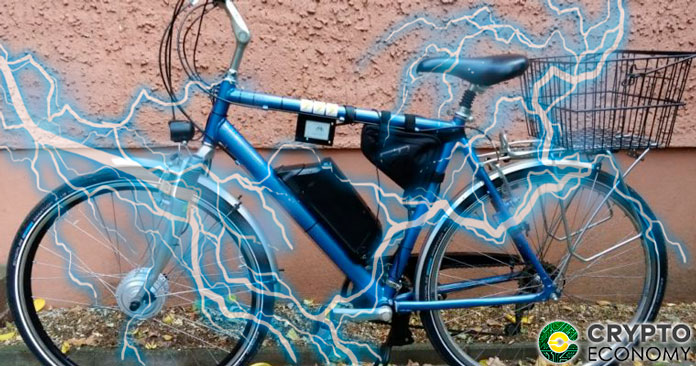Matthias Steinig is a developer on a mission to bring blockchain applications to the mainstream. So far he has developed two innovative solutions that utilize the Lightning Network Bitcoin scaling solution. The first innovation was an e-commerce solution that supports Lightning transactions – that is micropayments – for any traditional e-commerce-based web store. This creation works similar to PayPal but utilizes the Bitcoin blockchain.
His latest innovation is more noteworthy. He has built a rentable electric bicycle, not unlike most in the market except for one minor adjustment. It integrates hardware that supports bitcoin transactions on the Lightning Network that allows the rider to engage the electric motor and avoid manually cycling the bicycle. The code that runs the electric motor is available on Steinig’s GitHub’s repository.
Steinig had taken to Twitter last month to announce the innovation. He wrote:
“lightning-bike, the e-bike whose electrical support can be paid for with ⚡lightning⚡ https://t.co/8sUn1ca1Xu. Tomorrow I take a video how it works, so stay tuned! pic.twitter.com/X1z5tj2v72”
The code, written in Python, has been made available on GitHub to allow commercial developers to tweak and improve on the innovation. The hardware that supports the micropayments has two components that connect the bike to the bitcoin ecosystem. First, the hardware is based upon the Raspberry Pi. The first element is the server component which works as the gateway that sends commands to the battery to provide the ‘boost’ to the bike and enforce forward movement for a specified amount of time as payment is made. The second component is the wireless receiver to offer networking capabilities to the device and has an integrated LCD screen.
The whole system works simply by allowing the rider to make payments for boost capabilities and avoid manually cycling. The rider essentially pays for minutes of ‘boost’. The minimum that a user can purchase is one minute at the rate of 250 satoshis. That is about 2 cents for every minute. The LCD display provides the interface for the user to interact with the system.
This innovation is meant to prove that bitcoin can be used to make trivial payments through the Lightning Network and it also offers a nice primer to most prospective cyclists who use the bike and are new to bitcoin. Rental bikes have become especially popular in the metropolitan areas which makes the Lighting Bike a viable innovation.












